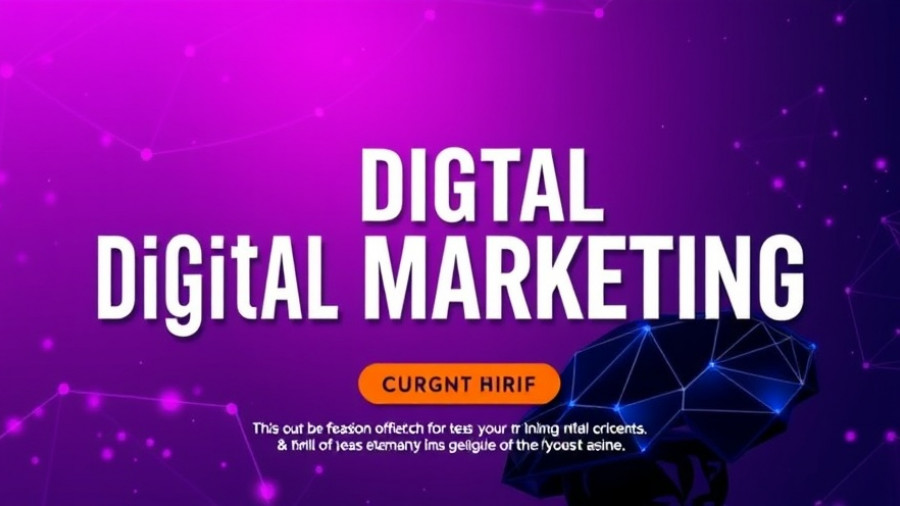
Telemarketing's Resurgence: A Vital Tool for B2B Appointment Setting
In today's rapidly evolving business landscape, telemarketing services are making a significant comeback, particularly in the realm of B2B appointment setting for manufacturing firms. With digital marketing techniques saturating the market, the human touch offered by telemarketing is becoming an invaluable asset. Companies are increasingly recognizing the efficacy of personal interaction in securing high-stakes appointments with potential clients, validating the necessity of incorporating telemarketing into their overall sales strategy.
The Unique Value of Telemarketing in B2B Sales
While traditional advertising channels and digital solutions have transformed customer engagement, telemarketing distinguishes itself through tailored communication. This method allows firms to build rapport and trust with stakeholders, leading to higher engagement rates and improved conversion outcomes. According to industry research, B2B telemarketing can yield appointment-setting rates as high as 25%, showcasing its power in facilitating meaningful business connections.
Integrating Digital Marketing with Telemarketing Efforts
To maximize results, manufacturing firms are increasingly blending telemarketing efforts with digital marketing strategies. For instance, companies update their CRM systems and utilize marketing automation tools to streamline follow-ups and refine their messaging based on previous interactions. This comprehensive approach not only enhances leveraging analytics but also provides teams with vital customer engagement data to inform future campaigns.
Real-World Success Stories: Telemarketing in Action
Several case studies reveal how companies have successfully integrated telemarketing into their sales strategy. For example, a manufacturing firm boosted its appointment-setting rate by 40% after employing a dedicated telemarketing team. By investing in training for their agents, they focused on understanding customer needs and addressing industry pain points, effectively turning cold calls into warm appointments. These real-world examples demonstrate the measurable benefits of telemarketing when combined with solid marketing strategies.
Future Trends in B2B Telemarketing
As we look towards the horizon, we anticipate several exciting trends that will shape the future of telemarketing services in B2B contexts. The integration of AI in digital marketing, for example, will streamline contacting prospects and help personalize interactions. Furthermore, e-commerce and mobile marketing strategies will gain traction, emphasizing the need for telemarketers to adapt and innovate continuously. Manufacturers that embrace these changes will likely find themselves at a competitive advantage.
Counterarguments: Challenges and Drawbacks of Telemarketing
Despite its advantages, telemarketing is not without its challenges. Many professionals argue that it can be perceived as intrusive, particularly in a world with rising concerns about privacy and consumer preferences for self-service channels. Additionally, fluctuations in telemarketing regulations may pose hurdles for firms practicing this strategy. Businesses must navigate these issues adeptly, ensuring that their approach is respectful of potential customers' time and privacy.
Actionable Insights: Best Practices for B2B Telemarketing
For manufacturing firms seeking to implement or enhance their telemarketing efforts, consider these best practices: 1. **Leverage Data-Driven Marketing**: Utilize data to fine-tune targeting efforts and optimize marketing strategies to ensure you’re reaching the right audience. 2. **Training and Development**: Continuously invest in training your telemarketing team, ensuring they are well-versed in product offerings and customer engagement techniques. 3. **Follow-Up Strategies**: Establish a structured follow-up strategy, using insights from your telemarketing efforts to inform and guide future marketing campaigns.
Conclusion: Embrace the Power of Telemarketing
For manufacturing firms navigating the complexities of B2B sales, incorporating telemarketing services can be a game changer. By blending personal interaction with strategic marketing automation tools and digital integration, businesses can enhance appointment-setting efforts, drive engagement, and ultimately boost conversion rates. As the market continues to evolve, firms that adapt and leverage the strengths of telemarketing will position themselves for success in the years to come.
 Add Row
Add Row  Add
Add 




Write A Comment